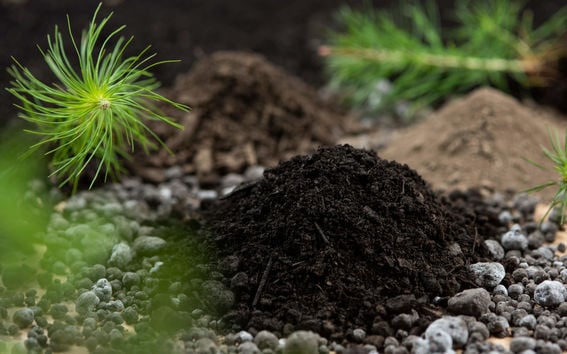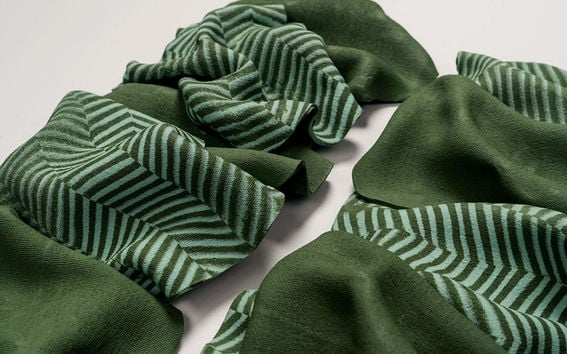Five things everyone needs to know about boosting the sustainable bioeconomy

1. The bioinnovation realization process is too slow
People often think that success starts when an innovation ‘spins off’ into a company, but that’s actually where the biggest challenges start: getting funding, piloting, scaling up and capturing market share.
I think of the process in engineering terms, on a scale of technical readiness. A score of one is the idea for commercialisation and a nine is commercial success – i.e., a product being available to consumers, or a process improvement being sold and implemented in the industry. Licensing a technology to a large company is considered success, but is it economic or environmentally useful? will it benefit society? For example, competitors could acquire the rights to an innovation to drive a challenger out of the market, or they fall short of perceiving the actual challenges of bringing this to the market leaving the innovation seating in the shelf for years, which means that no sustainable business is created.
In the bioeconomy, the road from research breakthrough to commercial success can easily take over 20 years. The investment required to scale up can be millions of euros, and the processes are complex. A quarter of a century is a long time for companies and investors – and even more so for fighting climate change, which calls for new sustainable solutions now. That’s why we need to speed up the process of bioinnovation realization.
2. You can make almost anything out of trees – but there are challenges
One reason why new bioinnovations are slow to develop is the raw material. While straw and algae can be used as feedstocks for bio-based products, wood is the most important raw material by far. Over millions of years, nature has shaped wood into an amazing material whose building blocks – cellulose, hemicellulose and lignin – can be used for many purposes, from coatings and textile fibres to food.
But because wood is a living material, it’s not as homogeneous as current raw materials made from fossil fuels. Small differences in where wood is grown or even when it is felled can affect the whole process, and this needs to be taken into account in product development for new biorefineries. The valorisation of pulp and paper industry core and side streams has shown over the past decades how complex – but possible, it is to get valuable bioproducts and materials out of sustainably managed forests.

3. Multidisciplinary cooperation speeds up the process
My tenure-track professorship was allowed thanks to the implementation of the Bioinnovation Centre at Aalto University, which includes a multidisciplinary PhD programme. It was the uniqueness of this professorship that attracted me to Finland – Aalto had the courage to hire me to do something completely new, not just to fill an existing position.
Multi-disciplinarity and industry collaboration is essential to drive innovation. How can we understand the entire value chain, from technology to design to business models, if we work in silos? In our centre, PhD researchers are mentored by professors and advisors from different disciplines, bringing different perspectives to their research. These collaborations mean that we can consider the different parts of the value chain early enough to avoid mistakes and speed up innovation. Involving industry partners in the early stages of development is also beneficial.
4. Courage is needed everywhere – even in funding
One of the key moments for research-driven innovators/start-ups/spinouts is moving from the lab to the pilot phase, where the technology gets tested at a larger scale. The journey often ends there, in what’s referred to as ‘death valley’. To reduce the risk of failure, we need not only multi-disciplinarity but also more applied research, including on the commercial side. It would also help if start-ups and could take advantage of the research capabilities of universities for longer.
I’d also like to see more courage and new ways of thinking from policy-makers and companies. For example, the traditional risk-averse forestry industry has been struggling in various parts of the world. Maybe innovative university research could help companies switch to new products more quickly and avoid factory closures and redundancies.
Courage is also required from us researchers. Professors need to identify stars from outside their own field when recruiting. If I want to work with a clothing giant, I might not need more engineers on my team but instead a designer who speaks the same language as the company and understands consumer needs.

5. Bio-based does not automatically mean sustainable
Using wood as a material isn’t enough to make an innovation sustainable. The value chain has to be sustainable at every stage – not only in terms of the environment, but also for the economy, workers and consumers. Among other things, that means that manufacturing has to be scalable, so the product won’t be available only to wealthy hobbyists but also to ordinary consumers.
The value chain also has to be developed to ensure that all the raw materials are used sustainably from earth to earth in a circular model. Making an excellent product from one part of a tree isn’t enough if the rest of the tree goes to waste and return to the atmosphere quickly as emissions – that’s both environmentally and economically unsustainable.
Because wood sequesters carbon as it grows, turning it into biomaterials is only truly sustainable if the process is carbon negative. That means the manufacturing should be done in a closed loop, with hardly any waste and almost everything recycled or reused. I may be a little biased, but I strongly believe that the first domain where this will happen is the manufacture of quality highly recyclable textiles.
Aalto University Bioinnovation Center
To achieve human wellbeing in planetary boundaries, we need new sustainable solutions to wisely use our natural resources. The Bioinnovation Center especially focuses on innovations in sustainable bio-based materials, with special focus on textiles and packaging.

Luana Dessbesell aims to translate bioproducts research into commercial success
Professor Luana Dessbesell works on bridging the gap between academia and industry. Her research group Sustainable Bioproducts Innovation is a multidisciplinary group of people who seek to support the development and commercialization of new forest-based innovations.

- Published:
- Updated:
Read more news

Call for two Assistant Professors in Computational Physics
The Department of Applied Physics at Aalto University School of Science invites applications for two Assistant professor positions in Computational Physics.
Auditor's expertise in climate risks affects the quality of the client's climate risk disclosures
The study was carried out in international cooperation with universities from several countries
Finland is strongly investing in AI and establishing an ELLIS Institute to accelerate research and attract talent
Public and private sector investment are coming together to launch ELLIS Institute Finland.